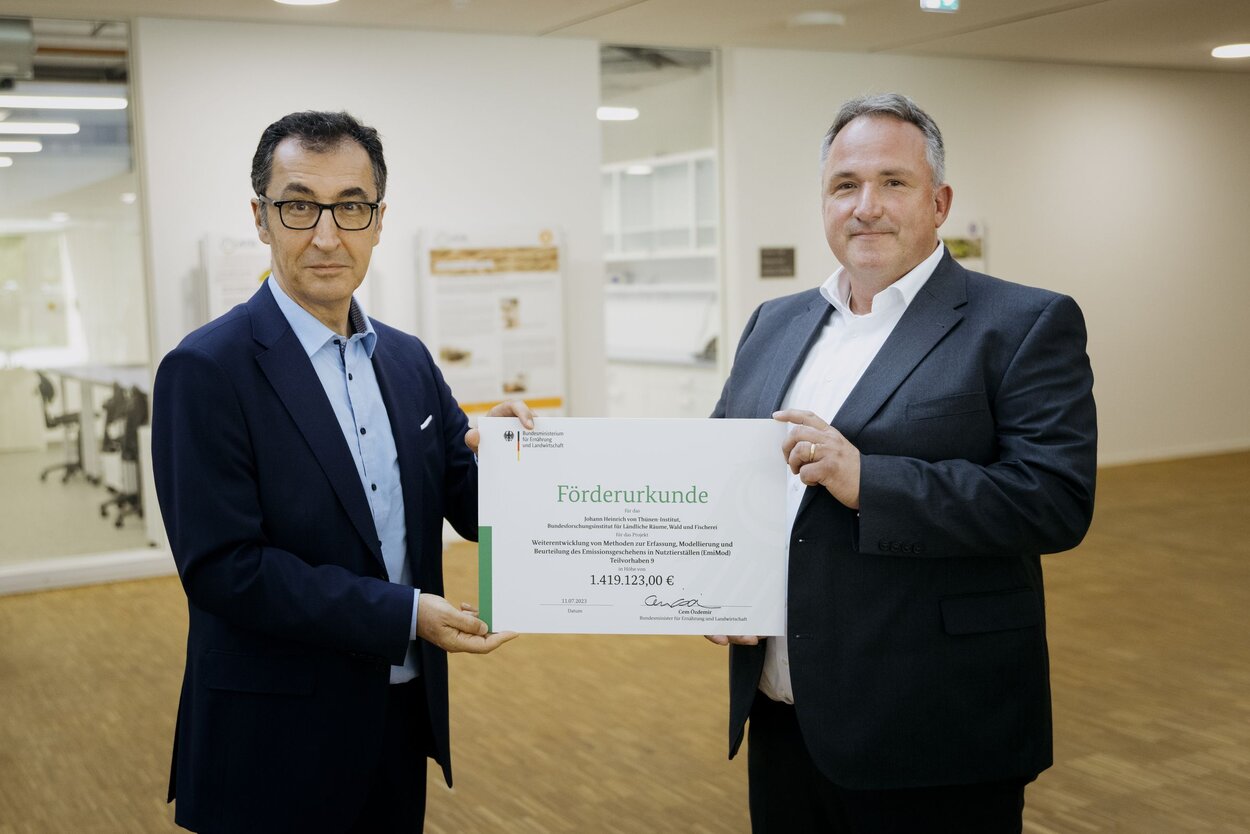The aim of the national collaborative project with ten partner institutions is to further develop and simplify methods for recording, modeling and assessing emissions of ammonia and other climate-affecting gases as well as odors and bioaerosols in freely ventilated fattening pig and dairy cattle barns. For this purpose, classical emission measurement methods will be combined with novel measurement strategies, numerical flow simulations and artificial intelligence (AI) applications. As a result, the collection of emission data will be more accurate, simpler and cheaper in the future than before. At the same time, alternative housing systems can be assessed more appropriately. The results will serve as a basis for decision-making by planners, licensing and monitoring authorities. The data provide policymakers with a reliable basis, for example, for further developing animal-friendly and environmentally friendly husbandry methods. The farms themselves can, for example, monitor their emission levels and contribute to environmental and climate protection by taking appropriate measures.
The task of the Thuenen Institute is the (further) development of low-cost sensor arrays, the measurement of bioaerosols and the modeling of different emission situations using digital twins of the livestock buildings to derive emission rates. The German Federal Ministry of Agriculture and Food has made more than 1.4 million euros available for this purpose. The project will run for around five years. Five third-party funded positions for scientists and technicians are being funded.
The joint project is part of the research and innovation programme "Climate Protection in Agriculture". This work is financially supported by the Federal Ministry of Food and Agriculture (BMEL) based on a decision oft he Parliament of the Federal Republic of Germany, granted by the Federal Office for Agriculture and Food (BLE; grant number 28N206509).

![[Translate to English:] [Translate to English:]](/media/_processed_/3/6/csm_Hintergrund-Ausschnitt1_9daaef6b89.jpeg)
![[Translate to English:] [Translate to English:]](/media/_processed_/3/6/csm_Hintergrund-Ausschnitt1_0bd7111163.jpeg)






